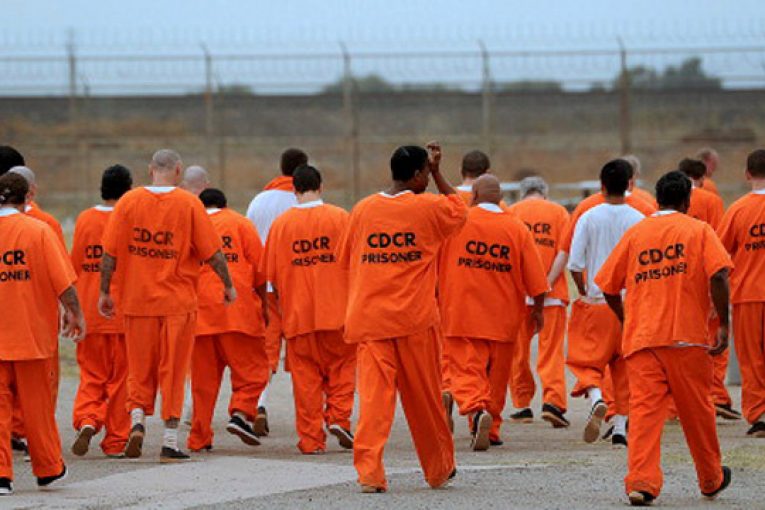
(Dashboard updates daily – M-F)
By Julietta Bisharyan & Mella Bettag
CDCR Confirmed COVID-19 Cases and Outcomes
As of July 24, there are a total of 7,481 confirmed COVID-19 cases in the CDCR facilities, with 1,054 new cases in the past two weeks. 27% of the cases are active in custody while less than 3% have been released while active. There have been 42 deaths as CA Institution for Men in Chino hold 45% of the deaths.
Pleasant Valley State Prison (PVSP) in Coalinga, Folsom State Prison (FSP) in Represa, and Central CA Women’s Facility (CCWF) in Chowchilla recorded its first cases of COVID-19 this week. 5 facilities are still yet to report any cases.
Testing at Avenal State Prison (ASP) in Avenal has increased significantly, from only 31 in the last two weeks of June to 805 being tested in the first two weeks of July. Despite having the lowest case counts, 3, Kern Valley State Prison (KVSP) in Delano has tested the most in the past two weeks –– 67% of its population.
64 incarcerated people are currently being treated at non-CDCR healthcare facilities.
CDCR Staff
899 staff members are currently COVID-positive, adding to the cumulative staff infection number of 1,544. There have been three deaths of staff members.
Staff infections are once again affecting the communities surrounding CDCR facilities, like Del Norte County, where Pelican Bay State Prison (PBSP) is. According to the Del Norte Department of Public Health, every positive case reported on Thursday was a PBSP staff member. Currently, PBSP staff members make up 23% of all active cases in Del Norte County.
Contact tracing, quarantines and increased testing have been implemented. According to the Del Norte Department of Public Health, nearly all of the PBSP cases are asymptomatic, and no one has been hospitalized.
At Pelican Bay, the only positive tests are coming for staff members. In fact, this is true of several facilities- staff members at every facility have tested positive, including the five facilities that have no cases within the incarcerated population.
Effect of CDCR Outbreaks on the Public
As the number of incarcerated people released from CDCR facilities grows, new issues arise for those who are let out and the surrounding communities.
According to Humboldt County Chief probation Officer Shaun Brenneman, people who are to be released by CDCR will have months with inmates to discuss their release plans, housing, and what support they can get from probation. Now, releases are happening rapidly, which means much less time for planning.
Some incarcerated people are being released while they are still positive. This makes it more difficult to find already sparse housing for individuals who can’t quarantine in their home. In Humboldt County, the Probation office had been working with Public Health Director Michele Stevens to support positive individuals transporting them to hotels after release, and delivering meals and medical help until they have recovered.
Several inmates have also voiced issues with releases during the pandemic. In an interview with KQED, Caesar McDowell discussed his problematic release.
After 20 years in prison, McDowell expected to have a morning of celebration with his family before moving into a transitional home. Instead, he was driven straight from the prison to a hotel 7 hours away. Despite not exhibiting any symptoms of COVID-19 or having any positive tests results, McDowell had been put into San Quentin’s COVID-19 ward for four days before his release. This meant he had to quarantine before having contact with anyone outside of the facility. He spent 11 days isolated in the hotel room. He never received his test results.
To aid release, CDCR has created Project Hope which harnesses empty hotel rooms as a place for incarcerated people to quarantine after being released. According to CDCR, Project hope is to “protect formerly incarcerated people who are at risk for homelessness or housing instability, and the communities to which they are returning”.
On July 17, The Board of State and Community Corrections gave CDCR $15 million for housing newly-released individuals as well.
In part of CDCR’s efforts to reduce its incarcerated population due to COVID-19, Santiago Cruz or the “Three Striker” of Sacramento is being released.
Cruz was serving a 125-year-to-life sentence for arson and for making threats to rape and kill. He had been in prison since 1997.
After finalizing his divorce in 1994, Cruz allegedly continued to harass his ex-wife despite being put on a restraining order. Cruz also terrorized his ex-wife’s new boyfriend and his children, and at one point called the boyfriend’s 18-year-old daughter, threatening to rape and kill her while her father watched, before then killing him.
According to the District Attorney’s office, Cruz’s ex-wife is opposed to the decision to release him, saying that she now feels like “the one in prison.”
CDCR Comparisons – California and the US
According to the Marshall Project, California prisons remain third in the country in number of confirmed cases, following Texas and Federal prisons –– making up nearly 10% of total cases among incarcerated people. California makes up 5.6% of the total deaths in prison.
There have been at least 1,486 cases of coronavirus reported among prison staff. Three staff members have died while 616 have recovered.
CDCR and CCHCS Precautions
According to the COVID-19 informational website, CDCR, along with the Federal Receiver, has begun to reserve at least 100 beds at every facility in case of an outbreak, along with isolation space for those with “accessibility needs, mental health treatment, and those who require specific housing for safety and security purposes”. These beds would be used to isolate positive cases. The number of beds will be adjusted for each facility when “required”.
In response to an increase in positive tests at California Institution for Women (CIW), incarcerated people and staff are being mass tested. One 220-bed building in the facility has been turned into a quarantine and treatment area. Movement within the facility is limited, and staff are required to wear a mask at all times.
CDCR has been refusing intake from county jails on and off since April. On July 23rd, CDCR announced that it will continue to halt transfers from jails until August 23rd.
For general precautions, CDCR is following the Interim Guidance for Health Care and Public Health Providers created by the Centers for Disease Control and Prevention and California Department of Public Health.




